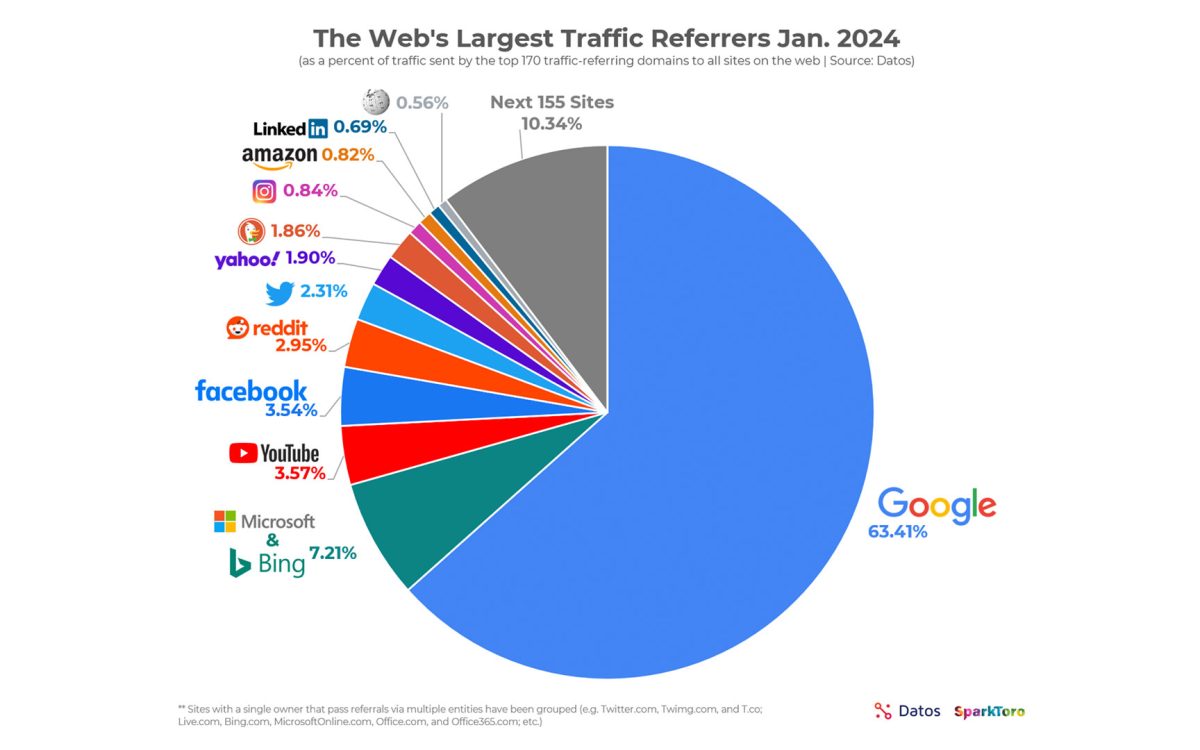With emergence of explosive social media platforms such as TikTok, there has been a lot of conversations about future of search engines and the role of SEO in generating business results. The study conducted by Rand Fishkin in partnership with SparkToro and clickstream data provider Datos sheds light on the current landscape of web traffic referrals. Google still dominates referral market with a share that is larger than all its competitors combined. Meaning that SEO is far from being dead and the role of a well-structured, optimized website is as important as ever.
Key findings from this comprehensive analysis include:
- Google’s Dominance: Google emerges as the leading traffic referrer, responsible for over 63% of all US web traffic referrals from the top 170 sites, a testament to its continued dominance in directing web traffic. Microsoft’s collection of sites, when combined, account for about 7.21% of referrals, showcasing the significant gap between Google and other players.
- The Long Tail of Web Traffic: The study dives into the distribution of web traffic beyond the top 170 most-visited sites, focusing on referrals to the “Long Tail” of the web. This segment reveals the diversity of sources contributing to web traffic, with only 22 sites having a 0.1% or greater share of this traffic.
- Surprising Players: Notable surprises include Reddit’s resilience as a significant referrer to the Long Tail, YouTube’s position below Facebook and Reddit in referrals, and the inclusion of Amazon and LinkedIn among the list of referrers, despite their tendencies to retain users within their ecosystems.
- Traffic Hoarding vs. Generosity: The analysis also compares sites based on the ratio of traffic they send out to how much they receive, highlighting Google’s role not just as a search engine but as a major navigation tool. It identifies both “traffic-hoarders” that tend to keep users within their domains and “generous” referrers that contribute significantly to the Long Tail of the web.
- Evolving Traffic Patterns: Over the 13-month study period, there was a noticeable shift of traffic away from the Long Tail towards the top 170 sites, raising concerns about the concentration of web traffic among a few dominant platforms.
- Methodology and Data Quality: The study emphasizes the robust methodology and data quality, relying on an opt-in, anonymized panel of users in the United States, ensuring the findings are both reliable and representative of broader web traffic trends.
This research provides invaluable insights into the dynamics of web traffic referrals, highlighting the enduring influence of major platforms like Google, the role of social media and other sites in directing traffic, and the evolving patterns that could impact the accessibility and visibility of smaller sites on the web


